13 May - 19 May
Section outline
-
Enter text here...
FOCUS / ARONGA learning intentions:
- We are FOCUSING on [changing views on conflict] by defining Aotearoa’s national identity and identifying how it has changed over time
- We are FOCUSING on [changing views on conflict] by discussing New Zealand’s involvement in WWI
- We are FOCUSING on [changing views on conflict] by explaining New Zealand’s involvement in the WW1
- We are FOCUSING on [changing views on conflict] by describing ANZAC day and comparing it with ways we commemorate other conflicts as a nation
- We are FOCUSING on [changing views on conflict] by comparing Aotearoa’s involvement in international conflicts over time and how they are commemorated
Enter text here...
Enter text here...
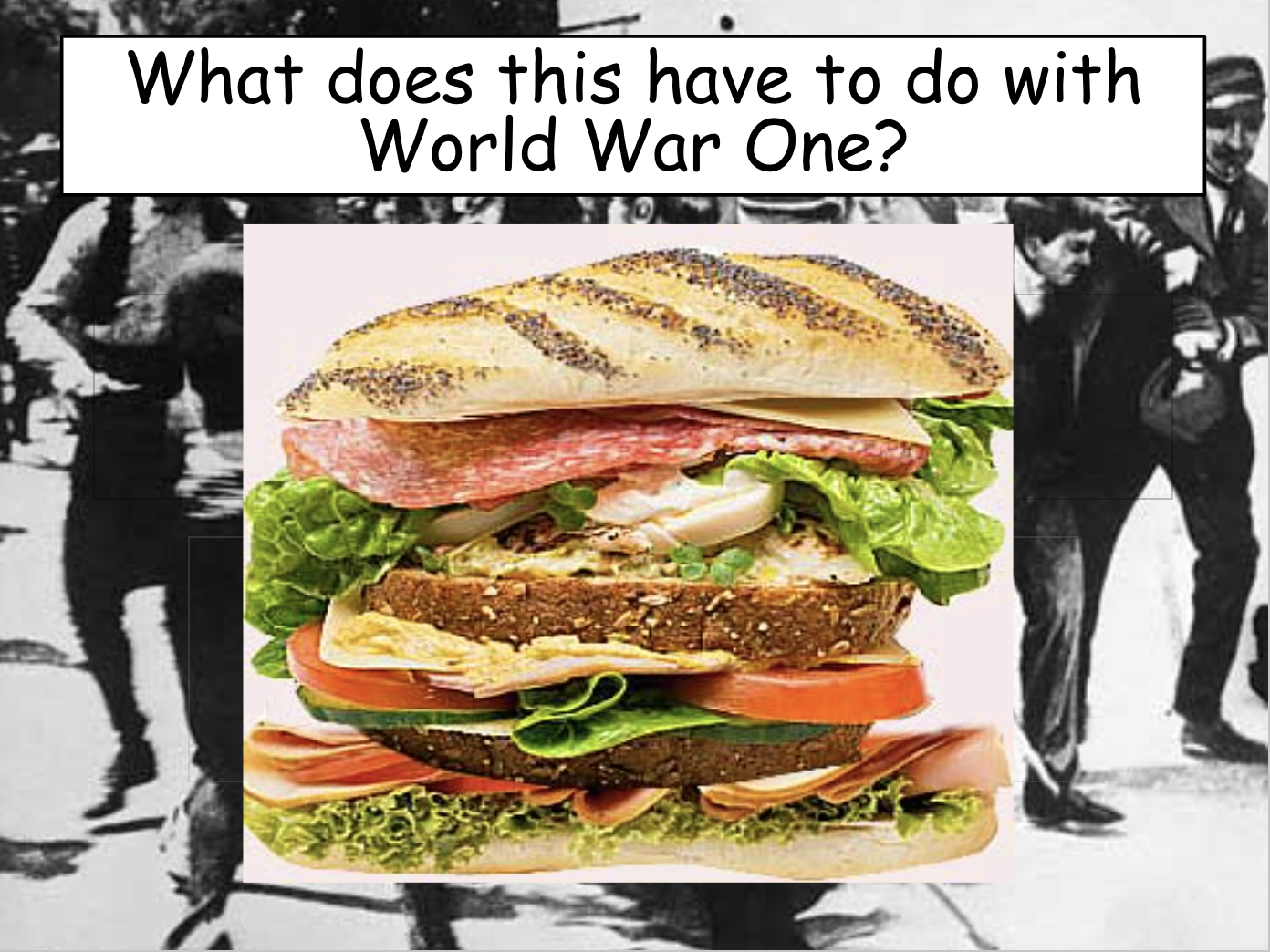
Following up from last week's lesson
Learning Intentions:
- To describe the assassination of Archduke Franz Ferdinand.
- To predict how his assassination led to World War One.
Answer these questions
- Who assassinated the Archduke?
- Where did this happen?
- Was this part of the plan?
- Come up with some 'what if's'
Franz Ferdinand arrived in Sarajevo on 28 June 1914, a Sunday, and was met at the railway station by General Potiorek, to be taken on to the City Hall for the reception and speeches.
Seven members of the Black Hand lined the route due to be taken by the Archduke's cavalcade along Appel Quay. One of the men, Nedjelko Cabrinovic, threw a grenade at the Archduke's car. The driver took evasive action and quickly sped from the scene. The grenade bounced off the back of the Archduke's car and rolled underneath the next car, exploding seconds later; two of its occupants were severely wounded.
Cabrinovic swallowed his cyanide capsule as instructed, and jumped into the River Miljacka. He did not die however, but was captured and arrested. Ferdinand attended the reception at the city hall and complained about his treatment in the city.
Following the reception the Archduke decided to visit those injured in the grenade explosion at the city hospital. General Potiorek decided that the motorcade should take an alternate route to the hospital, avoiding the city centre altogether. However the driver of Ferdinand's car, Franz Urban was not informed of the change of plan and so took the original route.
Turning into Franz Josef Street General Potiorek, who was a passenger in Ferdinand's car, noticed that the altered route had not been taken. He argued with the driver who in turn slowed the car and then began to reverse out of the street.
Gavrilo Princip who happened to be in Franz Joseph Street, buying a sandwich at a cafe, seized his opportunity, and took aim at Ferdinand from a distance of five feet. His bullets struck the Archduke in the neck and his wife, Sophie, who was travelling with him, in the abdomen.
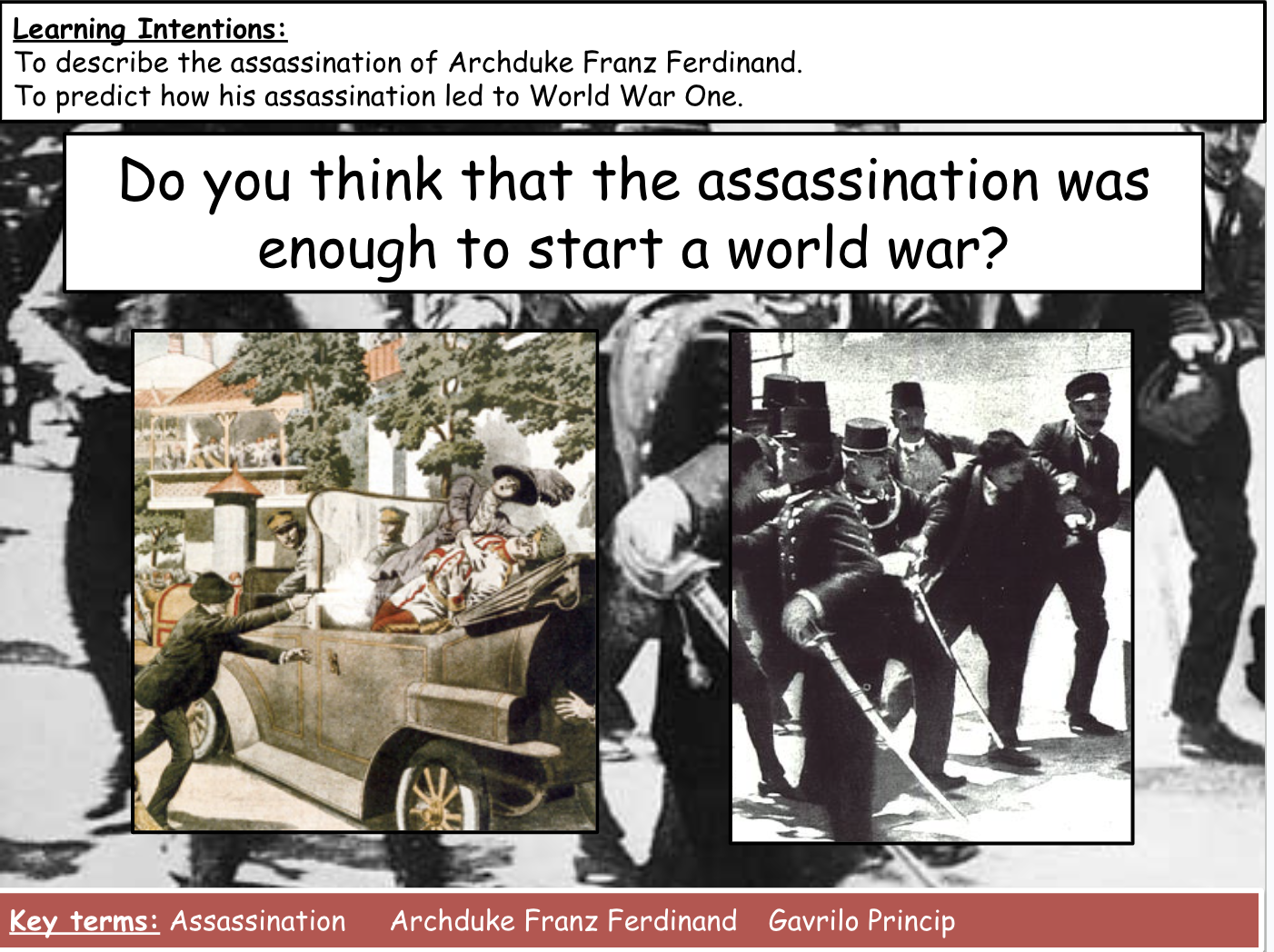
Serbia was blamed by Austria for this murder. Serbia was near to Bosnia and it had encouraged the Black Hand Gang and given the gang weapons. Serbia hoped that both herself and Bosnia would unite to form a new state.
Austria decided that Serbia must be punished and planned to invade her. Serbia called on her old friend Russia to help her.
Serbia would have been easy for Austria to crush. Russia was a different issue. She had a huge army and Austria would not have coped with a Austro-Russian war. Austria called on Germany for help. The German government agreed to this and their response upset the French government.
However, unknown to anybody other than the German government, the German army had created a plan to defeat France in 6 weeks before fighting Russia.
This plan involved an attack on France via Belgium.
Britain had given Belgium a guarantee in 1839 that if anybody attacked her, Britain would attack the attacker.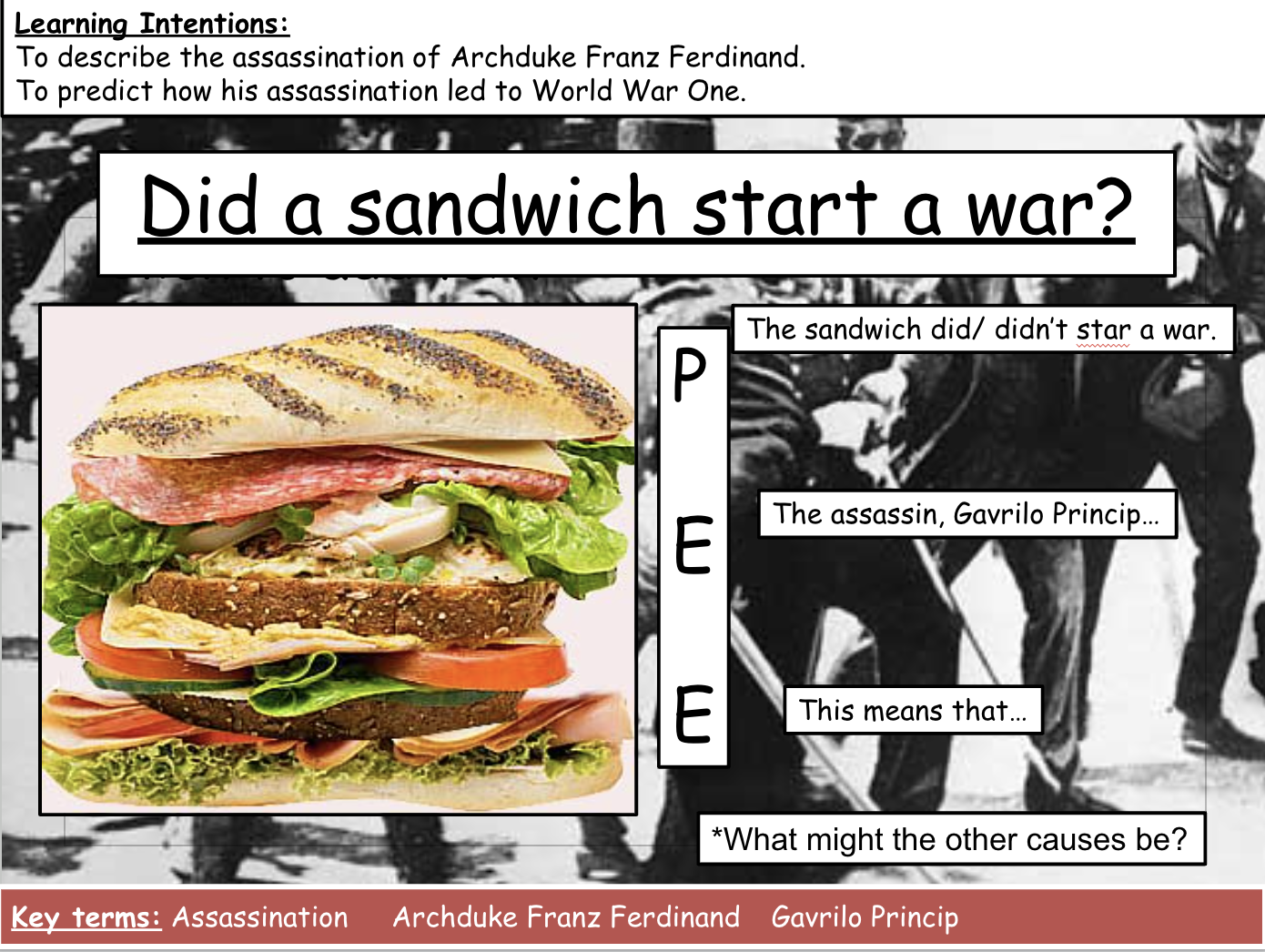
So lets review
How accurate is this statement:“The first world war broke out because of Germany’s acquisition of overseas colonies and the development of a large navy.”
Lets talk about Alliances
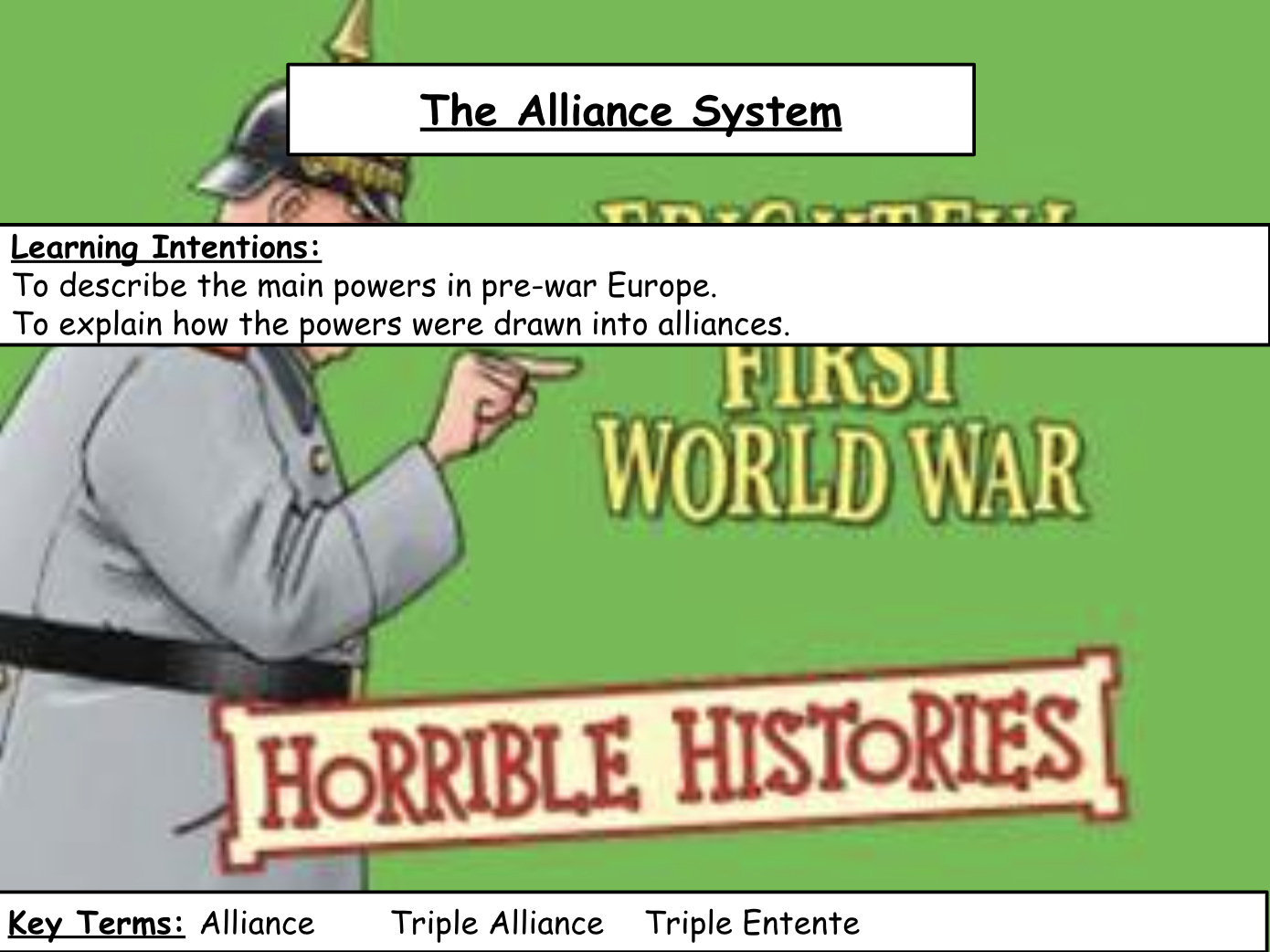
Review what we wrote about the quote last lesson.“The first world war broke out because of Germany’s acquisition of overseas colonies and the development of a large navy.”
By 1914 the most powerful countries in Europe were divided into two opposing Alliances.
Alliance: A union or association formed for mutual benefit
In your groups you have been given an information card for the main countries that were involved in World War One. Each of them were part of an alliance with countries that shared their ideas and could be counted as allies.
Task
You must decide what countries should form an alliance based on the information on the cards.
You will have to justify you answer.
The Triple Entente (French for agreement): this was between Britain, Russia and France.
- The Triple Alliance: This was between Germany, Italy and Austria Hungary.
Review the political cartoon
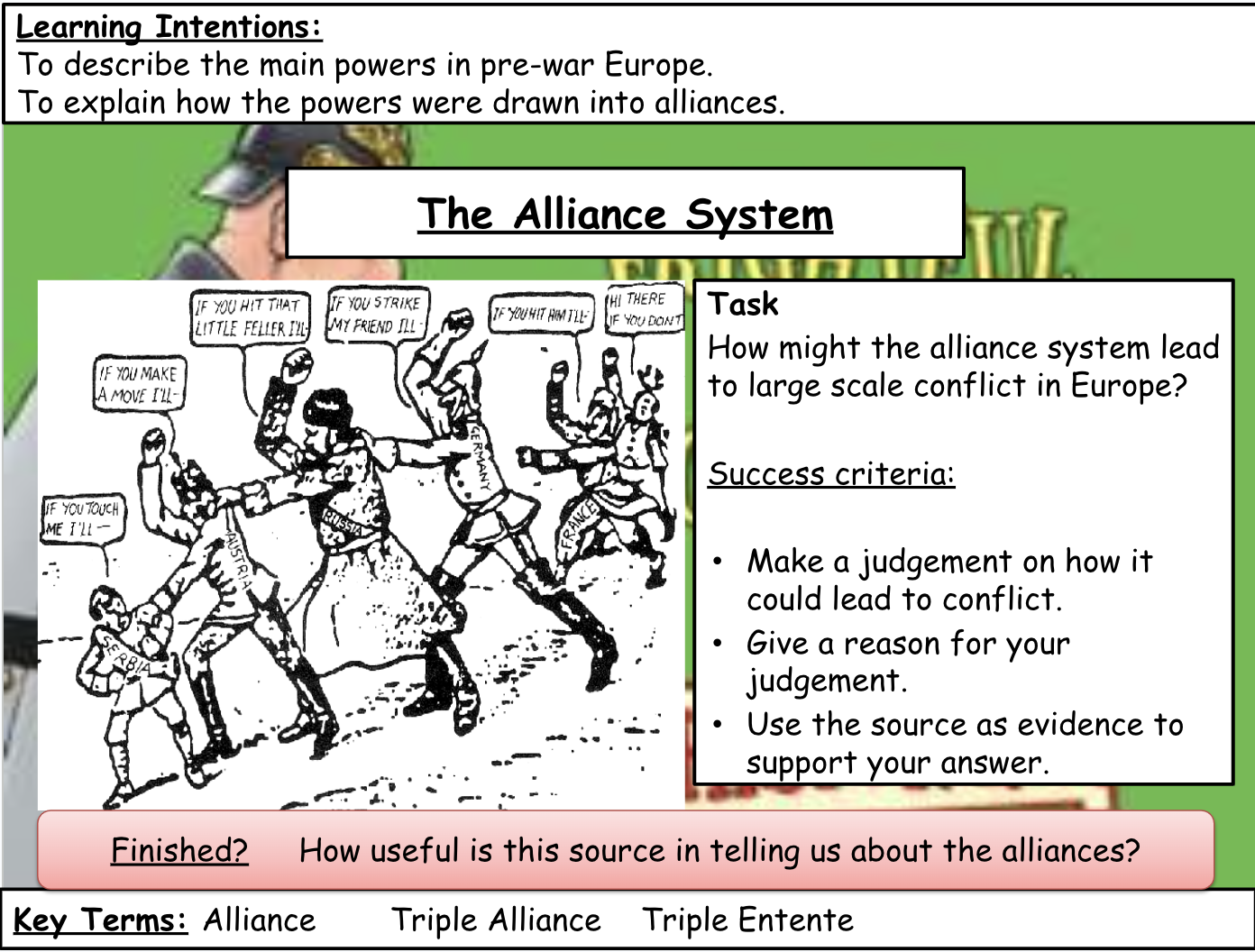
How could the alliance system cause a war?
